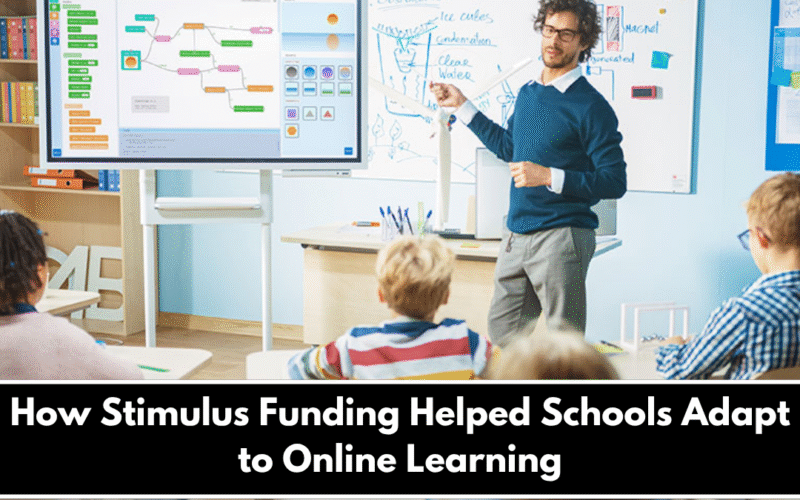When the COVID-19 pandemic forced schools to shut their doors, millions of students and teachers suddenly had to shift to online learning. But for many schools—especially those in underfunded areas—this was a major challenge. They lacked laptops, internet access, training, and digital learning tools. That’s where government stimulus funding came in. Through multiple relief packages like the CARES Act, CRRSA Act, and ARP Act, billions of dollars were provided to help schools transition to remote learning and ensure education continued. These funds became a lifeline for public and private schools, helping them buy devices, provide internet access, train teachers, and support students’ mental health needs during the digital shift.
Investments in Technology and Internet Access
One of the most urgent needs during the switch to online learning was technology. Many students—especially those from low-income families—did not have access to a reliable device or internet connection at home.
With stimulus funding, schools were able to:
- Purchase Chromebooks, laptops, and tablets for students and teachers.
- Provide mobile hotspots or pay for home internet service to keep students connected.
- Build or improve digital infrastructure, including online learning platforms and secure communication tools.
Districts across the country distributed millions of devices using these funds. For example, Los Angeles Unified School District used stimulus money to ensure every student had a working device and internet access by mid-2020.
These actions helped close the “digital divide” and made it possible for students from all backgrounds to continue learning during school closures.
Teacher Training and Mental Health Support
While access to devices was important, another critical area of support was training educators to use new online tools effectively. Many teachers had never taught virtual classes before, and the sudden shift created confusion and stress.
Stimulus funding allowed schools to:
- Offer professional development and training sessions focused on using tools like Zoom, Google Classroom, and other learning management systems.
- Hire technology coordinators to support teachers and troubleshoot tech issues.
- Implement mental health programs to help students cope with the emotional stress of isolation, family illness, or learning loss.
- Expand access to counseling and social-emotional learning platforms.
This well-rounded approach ensured that the transition to remote learning wasn’t just about devices—but also about creating a supportive, effective, and engaging environment for students and staff alike.
The transition to online learning during the pandemic could have caused an even deeper educational crisis if not for timely and substantial stimulus funding. With this support, schools were able to equip students with technology, ensure connectivity, provide teacher training, and support mental health services. Although the shift was not perfect, stimulus funding helped reduce the damage and keep education moving forward during one of the most difficult times in recent history. As schools return to in-person learning or adopt hybrid models, the investments made through stimulus funds continue to have long-term benefits—especially in digital readiness and equity.
FAQ’s:
1. What is the CARES Act and how did it help schools?
The CARES Act (Coronavirus Aid, Relief, and Economic Security Act) was passed in March 2020 and provided $13.2 billion for K–12 schools to address pandemic-related needs, including support for online learning.
2. How did stimulus funding help students without internet access?
Schools used stimulus funds to buy mobile hotspots, subsidize home internet, or set up Wi-Fi access in community spaces to help students stay connected.
3. What kind of training did teachers receive during remote learning?
Teachers were trained on digital platforms like Zoom, Google Meet, and learning management systems. They also received guidance on remote student engagement and managing online classrooms.
4. Were mental health services included in stimulus funding plans?
Yes, many schools used the funding to expand counseling, social-emotional learning programs, and telehealth services to support student mental health during the pandemic.
5. Is the technology purchased with stimulus money still being used?
Yes, most schools continue to use the devices, software, and internet tools purchased during the pandemic, especially in hybrid and blended learning models.
